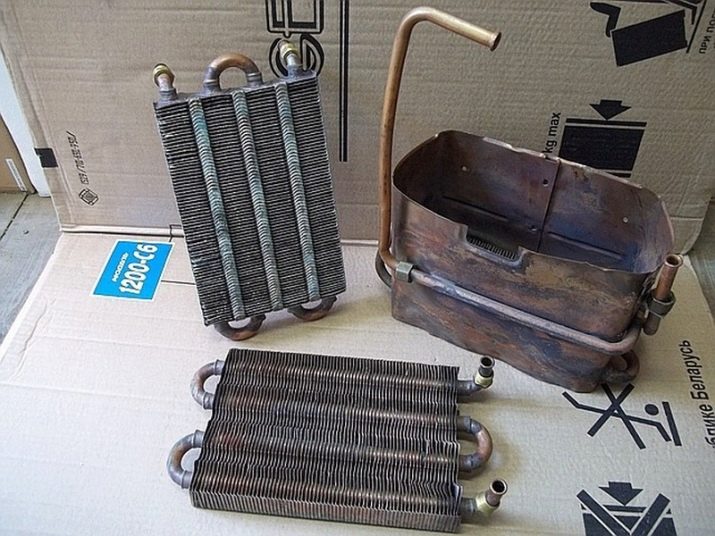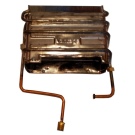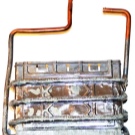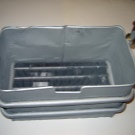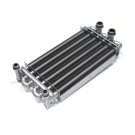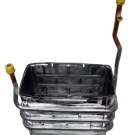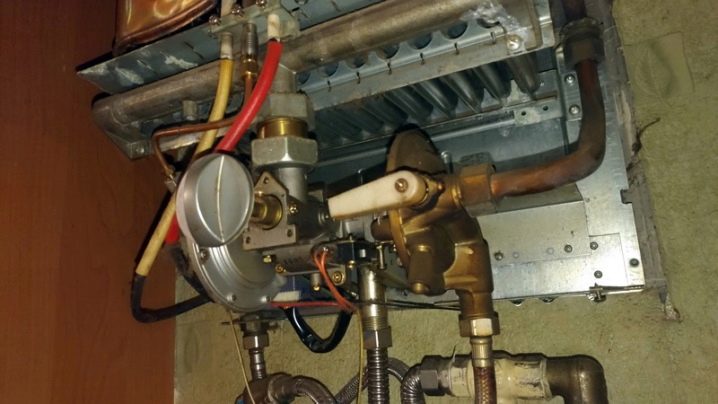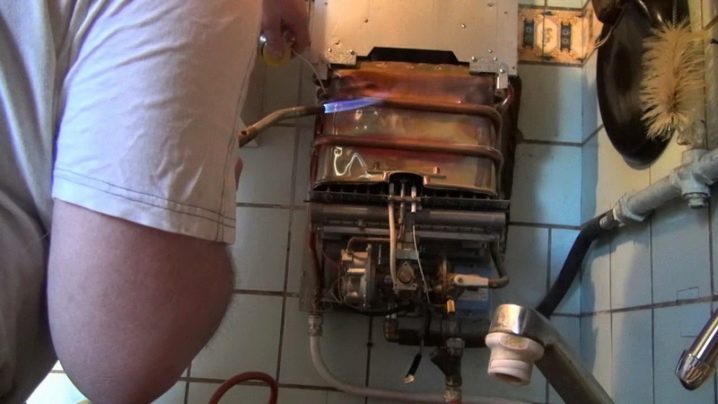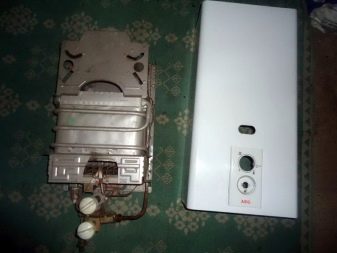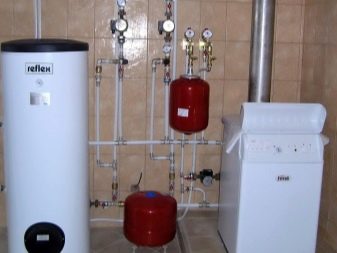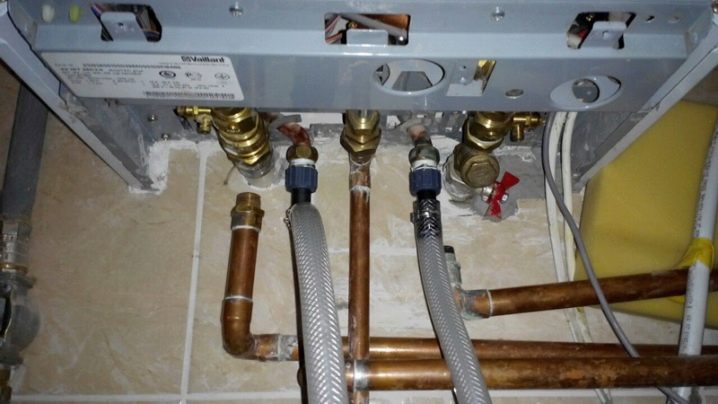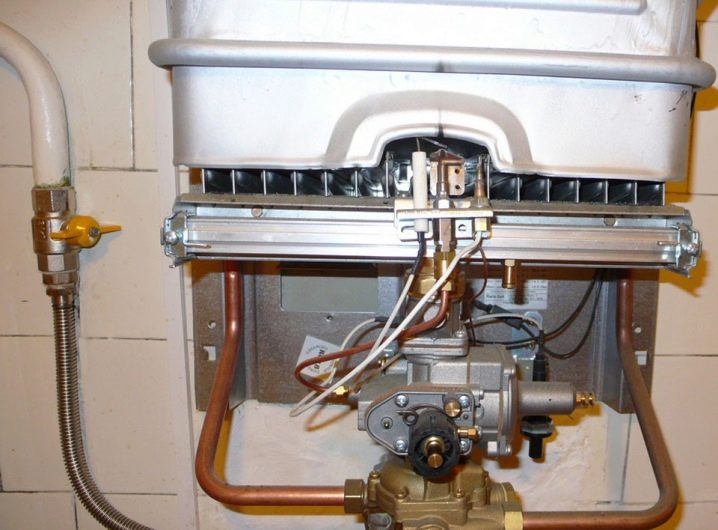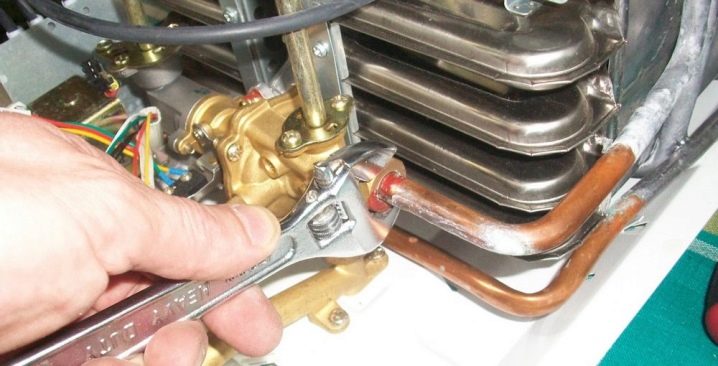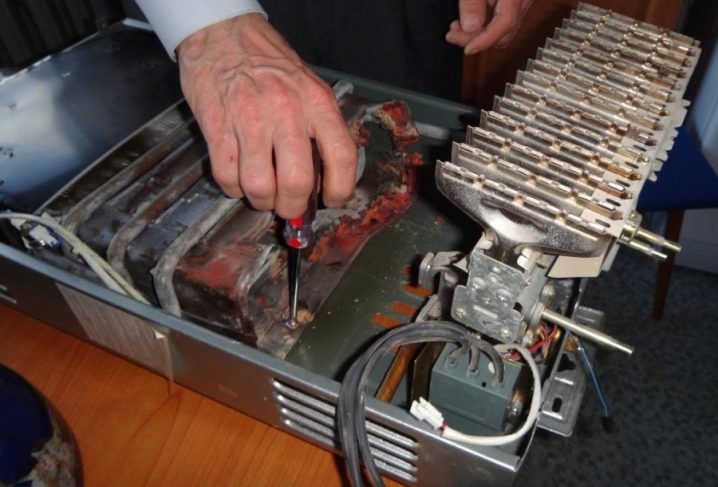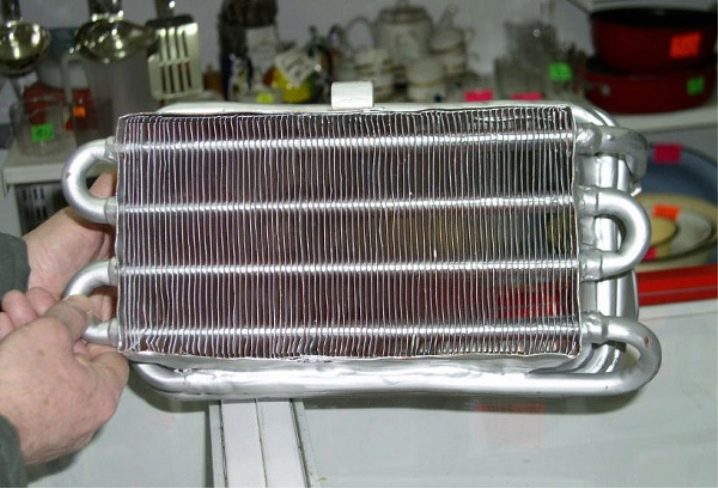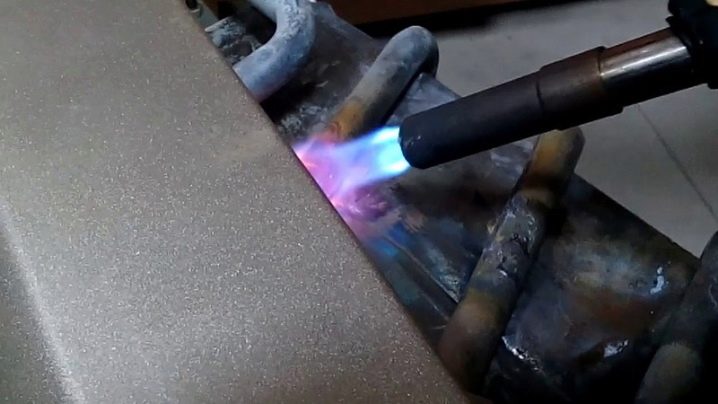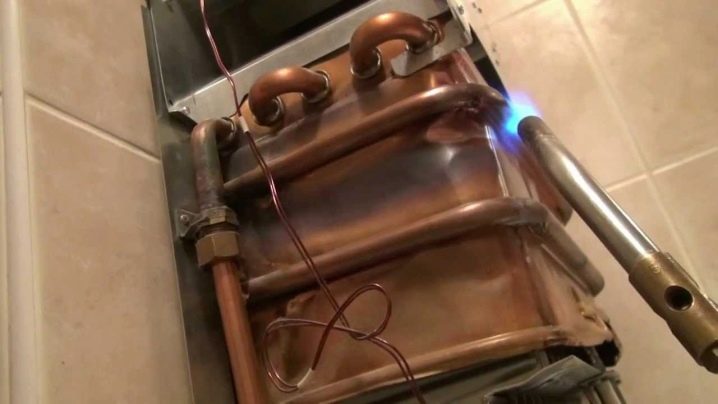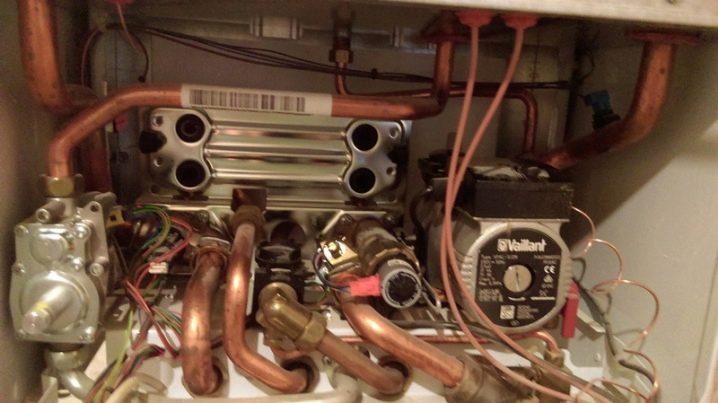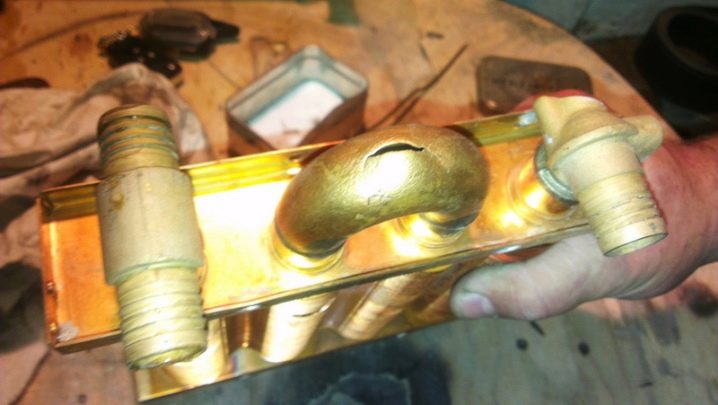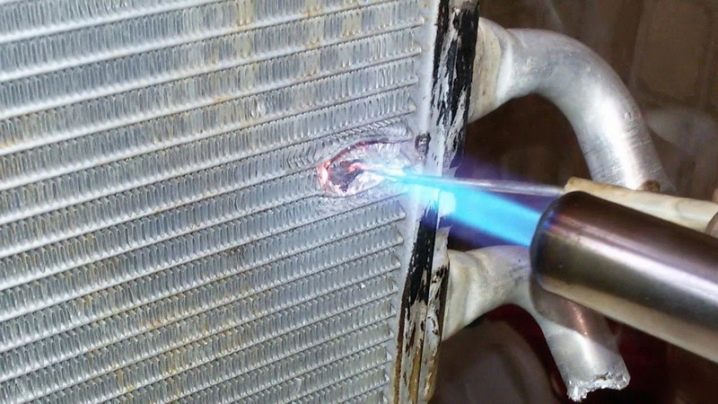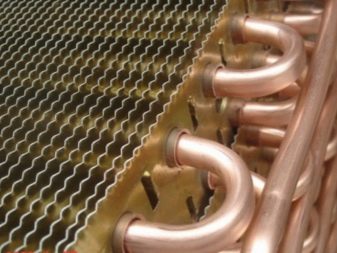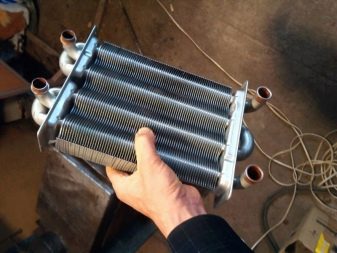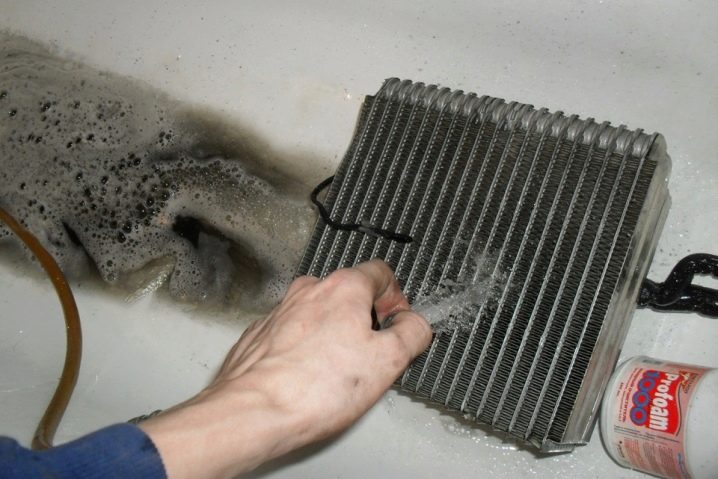Gas column heat exchangers: maintenance and troubleshooting
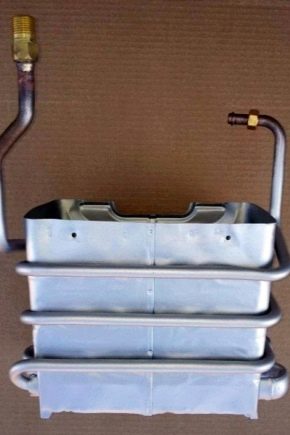
To heat water for hot water in many homes have to independently, without connecting to the boiler. Often this task is performed using gas columns. But the heat exchanger for the column on gas fuel can fail at any time - and we must be able to cope with this situation.
Special features
Water heaters that burn natural or liquefied gas, are in tens and hundreds of thousands of homes throughout Russia. But no matter how reliable and thoughtful their designs may be, they are constantly experiencing a significant burden. And sometimes it even acquires the ultimate character.The problems are connected with this, often the deformation of the structure occurs. Most often violated the most loaded node - the heat exchanger.
Disorders in the column and their elimination
If a water heater suddenly flows, sometimes the reason is the wear of the gaskets. When removing the cover, it becomes clear whether this assumption was justified. Having found a fistula in a heat exchanger, many consumers are interested in how to replace a problem part. But the difficulty is that the price of spare parts reaches 30% of the price for a completely new heater.
It is much more practical to solder a mechanical defect using a soldering iron. Solder melts at about 200 degrees. The exact value is determined by the brand of the particular part. Even if water boils for a long time, it will not break the integrity of the patch. Such a decision is equally important for Russian and foreign speakers. After all, the risk of breakage is present everywhere, only the service life differs, but defects will still appear in any model.
Causes of failure of heat exchangers
The period of operation is determined primarily by how water is disinfected in the city water supply.In Russia, either pure chlorine or chlorine dioxide is used. When the water flow through the copper tube is heated, it leads to a violent chemical reaction. Copper chloride is inferior in strength to pure metal, and therefore fistulas appear rather quickly. Most of all lucky residents of cities where tap water is ozonized.
But there are still very few such settlements. The high cost of modern solutions does not allow to count on the rapid spread of ozonation. Moreover, now manufacturers have begun to save in every way. And if before with thick tubes of heat exchangers troubles happened quite rarely, now thin copper of poor quality is used everywhere. The service life of products significantly decreased.
How to get out of the situation
Starting soldering will not work immediately. First you have to pour the entire amount of coolant from the heat exchanger. Violation of this solid rule threatens that the liquid will continuously remove incoming heat.
As a result, the heating of the treated area to the desired value is impossible. You only need to open the valve, draining the hot liquid through the plumbing.
Then unscrew the nut that is superimposed on the cold pipe. The default column is higher than the tap. Because remove this way all the liquid will not work. It is possible to eliminate the last remains it, blowing the pipeline. If you don’t want to train your lungs by driving air through a garden hose, you can use a compressor or even a regular vacuum cleaner.
Technology work
Soldering with your own hands the heat exchanger, which went bankrupt, is quite easy. The technological process is well debugged and worked. Initially, it is required to take sandpaper with fine grain and clean them the area where the fistula is located. There should be no oxides. It is easy to recognize them - oxidized copper has a green color.
When cleaning is completed, the right place is rubbed with a cloth, which is impregnated with a cleaning composition. Various solders are used for tinning, their choice is determined individually. Many professionals recommend the use of POS-61. For work only soldering irons with a power from 0,1 kW will approach. Normal flux in such cases - rosin, even the one that is used by violinists is useful.
If rosin is not at all, it is well replaced by aspirin.This type of flux is available at any pharmacy and is suitable for situations where it is not possible to completely clear out the problem area. Important: there is a situation where the solder does not flow, but becomes loose, not moving from its place. Then there is a weak warming point, which is soldered.
It is necessary to further heat it up using:
- weak soldering iron (0.04 kW);
- hair dryer for construction work;
- near iron.
As soon as a uniform solder layer is evenly distributed over the desired area, it is required to increase its thickness to 0.1 - 0.2 cm. You will not need to do anything else, the fistula is completely closed and will not resume. But not everything is so simple ... In addition to the main part of the heat exchanger, you need to inspect the tube, and always the entire length. The tubes can also show the green part, which almost inevitably has microcracks.
If even small black dots are noticed, the problem area is tinned and soldered. Those who do not, are forced to repeat the repair every few months. It so happens that the problem place is not available at all. And then you need to remove the device to work with him outdoors. It all depends on the design of the gas column.
Some models are designed in such a way that you have to disassemble the product almost completely. Even without disconnecting the gas pipe in some cases is not enough. But when the dismantling is completed, the correction of defects is made according to standard technology. For your information: when buying heat exchangers for replacement, you should carefully inspect them. If signs of the previous ration are found, it is better to look at another copy.
Defect Search
Not always a visual inspection, even after cleaning the metal with emery paper, allows you to detect locations of defects. In such cases, conduct a special diagnosis under pressure. Supply the water jet inside the radiator assembly, using a bendable rubber hose for showers. One edge through the gasket is connected to the channel that delivers the coolant, and the other is attached to the radiator tube. One of the edges of the tube is intentionally blocked using a stopcock.
Then the faucet that feeds the water heater is put into operation. At this point, you must carefully monitor the surface of the heat exchanger and its tubes. Immediately all the points where there is a fistula, there are water drops.The rest will remain as dry as the desert. To mark problem areas, in order not to forget about them, an ordinary marker will help.
Additional recommendations
By blowing the place of soldering with a building dryer, you can significantly simplify and speed up the work. Some craftsmen even try to do with a hairdryer and not use soldering irons. When soldering is finished, the heat exchanger needs to be tested. The crimping procedure will help again. To rarely resort to repair, it is necessary to choose those water heaters in which the heat exchanger is made of thick-walled steel.
Additional protection for it are filters. With their help, the water is softer and cleaner. Therefore, the accumulation of scale is reduced. But if the harmful salts still accumulated in the heat exchanger, it will have to be rinsed on purpose. Even with thorough cleaning of incoming water, flushing is needed approximately once every 12 months. Brush or an ordinary vacuum cleaner helps to remove the dust from the plate. In the course of washing can be applied and improvised means - hydrochloric or citric acid. Warning: a potent caustic substance should be used very carefully. Strong blockages - not a reason to use large doses of it.The movement of fluid in the coil is created using a pump or watering can.
Then turn off the tube connecting the electronics and radiator. Mixer open. Sometimes they even loosen the nut, increasing the water flow. Hoses must be connected to the input and output using nozzles. Flushing, even with hydrochloric acid, should occur at least 5 times.
After the procedure, the coil is washed with tap water until the flow is cleaned.
If citric acid is chosen, the approach is different:
- dissolve 0.1 kg of powder in 35 l of water;
- the solution is poured into a coil using a watering can;
- then leave it inside the heat exchanger for ½ hour or the same time, heat the heat exchanger, placed in a basin of water;
- dry heat exchanger;
- return it to the gas column.
The method of calcination is that the radiator is heated by a burner, taking care of the uniformity of heat. Its impact causes scaling to crack. Then it is washed off with a stream of water just mechanically. It is impossible to solder radiators with galvanized tin. It will melt only at 70 degrees, in addition to form toxic substances.
On how to solder the heat exchanger for the gas column, see the following video.

